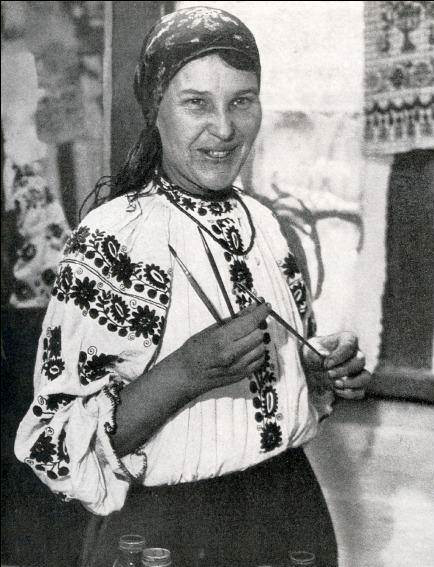In an attempt to impress upon the world his belief that Ukraine has no right to statehood, Vladimir Putin asserts that Ukraine has never had a culture. Its artists and museums beg to differ.
READ MORE: Sean Penn Visits Ukraine
Part of Russian President Vladimir Putin’s pretext for the invasion of Ukraine is his assertion that Ukraine’s right to exist as a separate state has no basis. In his televised address, he has explicitly stated that Ukraine has never had “real statehood,” and instead was always part of Russia’s “own history, culture, and spiritual space.”
This is, of course, not true. Kyiv, for example, was founded hundreds of years earlier than Moscow, and Ukraine has always had its own language and customs. Part of the way the invading forces are seeking to change this is by destroying Ukraine’s cultural treasures.
Maria Prymachenko is an artist that is considered an icon of Ukraine’s national identity. Having no formal training, her work focuses on purely Ukrainian aesthetics: folk-arts and crafting tradition, with themes familiar to her country: folklore, farming, and the natural world.

Pablo Picasso, after seeing an exhibit of Prymachenko’s works in Paris, said, “I bow down before the artistic miracle of this brilliant Ukrainian.” Her work is housed in the major Ukrainian museums, displayed on postage stamps and she is on commemorative coins.
Museums, postage stamps, and coinage: all facets of an existing country with its own culture. Russian forces know this, which is why they zeroed in on a museum in Ivankiv that holds a large selection of her work. That museum has since gone up in flames.
Natalia Gnatiuk, a partner at the Maria Pyrmachenko Family Foundation (the group that manages the artist’s catalog) told CNN that a local resident might have rescued the paintings. Of the burning, she believes it was done with intent. “It was the first building (destroyed in Ivankiv) and the task of the occupants is to destroy our Ukrainian roots, to destroy our Ukrainian culture — they hate it. And Maria Prymachenko is not only the symbol of Ivankiv … and not only the symbol of Ukraine but a symbol of the whole world today. I am sure it was on purpose.”
The city of Lviv, meanwhile, is bracing itself and is in a rush against time to protect its cache of historic art and rare religious manuscript. Lviv is known as Ukraine’s cultural capital and is a UNESCO World Heritage Site. Workers and volunteers at the national museums are rushing to save books and paintings, at the expense of packing properly: pieces are stored in crates made from whatever wood can be scavenged. A thousand-year-old bible decorated with golden thread was packed into a box used in a market.
The Armenian Cathedral of Lviv has removed a wooden sculpture of the crucifixion of Jesus Christ, which dates from medieval times. The giant stained-glass windows of Lviv’s Latin Cathedral, which survived World War II, have now been covered. Landmark statues are now swathed in bubble wrap.
At the Andrey Sheptytsky National Museum, workers are wrapping baroque pieces into cardboard boxes and carrying down giant pieces of sacred art, like an 18th-century Bohorodchany iconostasis.
General director Ihor Kozhan told the AP that his workers are feeling all sorts of emotions, the prevailing ones being sadness and anger. “Sometimes the tears are coming because a lot of labor has been put in here. It takes time, energy. You are doing something good, you feel pleased. Today you see empty walls, so it feels bitter, sad. We didn’t believe it till the last minute that this could happen.”
“[The] Museum has to live. People have to be there, and first of all children. They have to learn the basics of their culture,” he continued.





